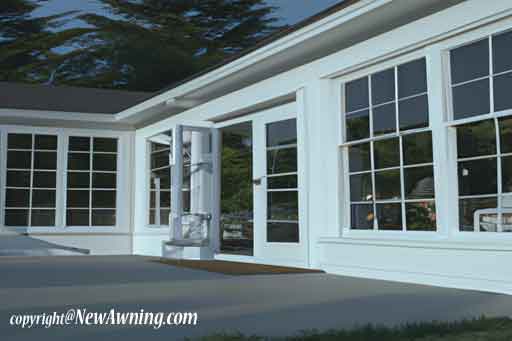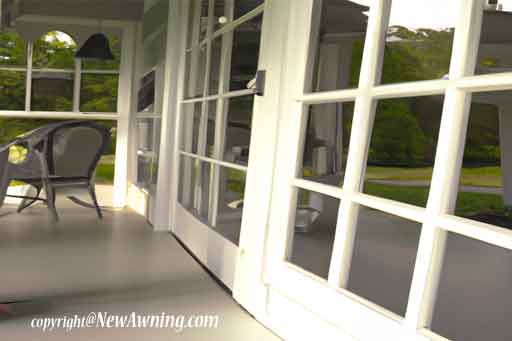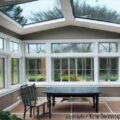Last Updated:July 27, 2024
Designing a Sunroom That Complements Your Home’s Architecture

The Importance of Matching Your Sunroom Cost to Your Home’s Architecture
When planning your sunroom, it’s essential to factor in the sunroom cost. You don’t wanna break the bank, but a well-designed sunroom can add value to your home, both aesthetically and financially. You’ll wanna match the architecture of your home, creating a seamless transition from inside to your outdoor space. Consider your credit score too, which can directly impact the money available for your project. A poor credit rating can increase your sunroom cost which would offset a lot of the financial gains
Your sunroom could be transformed into a lovely outdoor dining area, becoming an extension of your home, seamlessly blending the indoors with the outdoor. This could change your dining experience significantly, giving a whole new meaning to dining at home. With careful planning and budgeting, you can match the sunroom cost to your home’s architecture, and ending up with a tastefully designed space packed with your unique personal touch.
Choosing a Sunroom Design That Fits Your Home’s Style and Sunroom Ideas
Deciding on the perfect sunroom design that meshes well with your home’s existing style can be a delightful yet challenging process. Embrace the opportunity to integrate the sunroom design ideas into your home’s specific design elements and ambiance. You don’t want a sunroom that sticks out like a sore thumb- the design should be a seamless extension of your home.
Consider using components from your main house design so that the sunroom feels like a natural extension of your living space, not foreign. That’s where sunroom decorating ideas come in – potential elements can be a unique feature wall, similar flooring, or coordinating window treatments. These design elements create a harmonious connection between the main house and the sunroom, enhancing the overall home design.
Remember, sunroom building isn’t a one-size-fits-all project. Each home comes with its character and charm. A more modern house may benefit from clean lines and minimalistic decor, while a traditional home might look best with cozier, rustic sunroom decor. So, explore various sunroom ideas to find the one that best complements your home.
Aligning Windows and Doors for the Best Light in Your Sunroom
When designing a sunroom, it’s essential to take into account the alignment of windows and doors for the best light. You’ve already started considering matching your sunroom cost to your home’s architecture, and choosing a sunroom design that fits your home’s style. But getting the light right transforms a sunroom into a truly magical outdoor space. It’s all in how you manage to channel outdoor light through your sunroom’s windows. A well-thought-out layout of windows and doors can drastically brighten your sunroom’s layout, creating a vibrant area thriving on natural light. Repeat the process of aligning and adjusting windows to understand how light changes throughout the day. You’ll want to pick a sunroom theme that harmonizes with the influx of light, enhancing its ambiance. Smart sunroom designs go beyond aesthetics—they craft a beautifully sunlit space while ensuring outdoor views are optimally framed.
Choosing Materials That Match Your Home and Build a Coherent Sunroom Space
In our journey of designing a sunroom, choosing the right materials that match your home isn’t just about durability– it’s about creating a coherent space that seamlessly integrates with the existing architecture. The choice of materials for your sunroom depends heavily on your home’s style and the architectural elements we discussed earlier, like windows and doors. But remember, it’s not just about matching– the end goal is to complement your home’s architecture and maintain the ambiance.
The sunroom should feel like an extension of your home providing a distinctive yet coherent space. You don’t want it to feel out of place, disjointed from the rest of the home. Use materials that aren’t just aesthetically pleasing, but also practical and appropriate for a sunroom. This will help to ensure your new sunroom isn’t just a token addition, but an integral part of your home space. Together, through careful planning, understanding of design ideas, and decor selection, we can successfully build a beautiful and inviting sunroom.

Choosing a Colorful Maximalist Sunroom Decor for Your Space
A colorful maximalist sunroom can transform your space into an inviting and cheerful oasis. This design approach is all about color – bold, vibrant, and captivating. You’re not just choosing a sunroom color, you’re embracing an entire color palette that fills your sunroom with energy and life. It’s about maximizing color, hence the term ‘maximalist’. Your choice of sunroom style plays a critical role in establishing this maximalist theme. Layering patterns, textures, and colors will make the sunroom sunrooms appear visually stunning. The right blend of items can also help to unite all elements to create a coherent space with a high aesthetic appeal. From expressive paintings to vibrant cushions, every item plays its part in painting a unique color narrative. Remember, a maximalist sunroom doesn’t merely echo the color; it celebrates the sunroom design, and its character, making it a sanctuary of joy and warmth in your home. Make your sunroom space your canvas and unleash your creativity with an eclectic mix for a magical color ensemble.
The Interplay between Light and Color in Sunrooms
In sunrooms, the interplay between light and color is a key factor to consider during the design and decorating process. The amount of light entering your sunroom can drastically alter the perception of color within the space. When you’re brainstorming sunroom design ideas, think about how the sunlight will interact with your choice of colors. Light colors in sunrooms tend to reflect light, creating a space that not only appears larger but also is bathed in natural light. On the other hand, darker colors absorb light, resulting in a cozier and more intimate atmosphere. With these factors in mind, you’ll want to pick a sunroom decorations that optimizes the depiction and temperament of the room during all hours of the day. Ultimately, understanding the interaction between light and color in sunrooms is vital for designing a space that perfectly suits your home’s style and individual tastes.
Create an Aesthetic: Sunroom Design Ideas
Creating a visually pleasing aesthetic for your sunroom entails combining both sunroom ideas and harmonious sunroom designs. The aim is to design a cohesive space that links the interior of your home to the beauty of the surroundings. Previously, we dove into the importance of aligning your sunroom cost to your home’s architecture and selecting a sunroom design that fits your home’s style. We noted the significance of ensuring your windows and doors permit the best light, and choosing materials that match your home to build a coherent sunroom space.
Sunrooms are an opportunity to express your unique style, and we’ve touched on the idea of choosing a colorful maximalist sunroom decor. But remember, from subtly uniform colors to vibrant contrasts, your design choice should consider the interplay of light and color. After all, sunrooms are all about the natural light. Considering all these factors is key to creating a sunroom that enhances the beauty and value of your home.
Building a Sunroom that Matches Your Home’s Style
Building a sunroom that complements your home’s style isn’t just about aesthetics, it’s about harmony. Your home is a reflection of your personality, and adding a sunroom should enhance that rather than clash. To achieve this, you’ll need to take into consideration the architectural style of your home. If it’s modern, aim for a sleek, minimalist sunroom design. If it’s traditional, consider a sunroom decor that keeps in step with that vibe.
Don’t forget to add factors like the right windows and doors to maximize light and offer great views. Material selection is crucial too. Choose materials that not only suit your aesthetic but also blend seamlessly with the rest of your home. Lastly, be adventurous with sunroom decorating ideas, add touches of color, light interplays, and remember, maximalist sunroom decor isn’t necessarily loud. It’s about creating a balance between the sunroom and home style, producing a coherent space that’s uniquely yours.

Importance of Choosing the Right Material for Your Sunroom
When it comes to designing a sunroom, choosing the right material is as important as the sunroom’s layout. It’s essential to find a material that not only fits your home’s style but also enhances the aesthetics of your sunroom. Just like we emphasized on choosing a sunroom design that matches your home’s style and aligning windows and doors for optimum light, the importance of choosing the right material cannot be overstated. Whether you choose to build a maximalist sunroom decorated with vibrant colors or aim for a simple, minimalistic style, the material you choose plays a pivotal role in realizing your vision. Remember, the right material not only complements your sunroom ideas but can also have an impact on light and color interplay in sunrooms. Ultimately, choosing the right material will help you build a coherent sunroom space that seamlessly blends with your home’s architecture.
Some of the most popular window and door styles for sunrooms include single-paned, double-paned, and sliding. We just wrote a guide on how to make your sunroom more energy efficient , and we highly recommend using double-paned windows when you have the option. When choosing windows and doors for your sunroom, consider the style and placement of your home’s existing windows and doors. Aligning the placement and style of your sunroom’s windows and doors with your home’s windows and doors can help create a seamless transition between the two spaces.
Conserve Space: Sunroom Additions that Double as Conservatories
When seeking to add a sunroom, it’s crucial to think about the space it’ll consume. However, there’s an innovative way to add on to your home while also conservatively utilizing space. Let’s focus on sunroom additions that double as conservatories. Yes, you can add a multi-purpose area that serves as both a sunroom and a conservatory. By doing so, you’re adding value and additional functionality to your space, increasing the versatility of your home.
We’ve previously talked about the importance of aligning your sunroom with your home’s architecture and how the right materials can build a coherent sunroom space aesthetic. Now, it’s time to add another layer of complexity and dynamism to your sunroom design. By adding a conservatory, you increase natural light availability, which can spectacularly interact with your chosen sunroom decor, particularly if you opt for a colorful maximalist style.
Overall, doubling your sunroom as a conservatory will not only conserve space but add richness to your décor. So, let’s add more vibrancy and flexibility to our homes with a sunroom-addition-turned-conservatory!
The Transformative Power of Sunroom Ideas in Outdoor Spaces
One can’t understate the transformative power of well-thought-out sunroom ideas that flawlessly blend the indoor with the outdoor. The right blend of sunroom décor, design, and the spaces they occupy can spell the difference between an ordinary and an extraordinary outdoor living experience. Creating outdoor spaces that mirror the interior’s ambiance brings a harmony that’s visually appealing and emotionally soothing, and that’s where sunroom ideas play their pivotal role.
Just as we discussed in “Aligning Windows and Doors for the Best Light in Your Sunroom” and “Create an Aesthetic: Sunroom Designs and Sunroom Decor Ideas”; a well-planned sunroom design merges natural lights and spaces, forming a seamless indoor-outdoor connection. From building a sunroom that matches your home’s style to smartly conserving space by having sunroom additions double as conservatories, all these sunroom ideas can revamp your outdoor spaces, turning them into all-year-round, cozy retreats.
Therefore, when designing a sunroom, do consider the various sunroom ideas we’ve discussed. However, do remember that importance lies in choosing the right materials as mentioned in “Importance of Choosing the Right Material for Your Sunroom”.
Decorating your Sunroom: From Floral Sunrooms to Mid-Century Sunroom Designs
When it comes to decorating your sunroom, there’s a plethora of styles to consider. From casting a warm, embracing glow with the use of floral sunrooms that embrace botanical chic to trending towards mid-century sunroom designs, the opportunities are endless. As previously highlighted in the article, it’s essential when designing a sunroom to ensure the design matches your home’s architecture and style. Design elements, like the alignment of windows and doors, can truly determine the light exposure in your sunroom. Furthermore, it’s crucial to choose the right materials and colors to create a coherent sunroom space. Whether your taste leans towards vibrant maximalist decors or you’re aiming for a functional space doubling as a conservatory, well-thought-out sunroom decor can transform outdoor areas into comfy, inviting spaces. Hence, effective sunroom designs are nothing less than transformative!
Make a Statement: Design a Sunroom with a Personality
Designing your sunroom is all about letting your creativity shine. When it comes to sunroom design ideas, don’t be afraid to make a few bold statements. The perfect sunroom decor should reflect your personal style and make your guests feel welcome. As you design your sunroom, think about how you can make it a truly special place. From the windows to the decor, every aspect of the sunroom design should reflect your personality and taste. Whether you’re creating a space that’s modern, maximalist, or somewhere in between, the most important thing is to make your sunroom feel like a part of your home. By aligning the windows and doors for the best light, choosing materials that match your home’s style, and creating an aesthetic that appeals to your tastes, you can build a sunroom that not only enhances your home’s value but also makes it a more enjoyable place to live. So, make your move and start designing your sunroom today!
Using Natural Materials for an Eco-Friendly Sunroom
Decorating a sunroom using natural materials doesn’t just contribute to a soothing, organic aesthetic; it’s also a powerful way to design an eco-friendly sunroom. In deciding to make your sunroom natural, think beyond classic wooden accents, and understand that there’s a whole world of natural materials waiting to enrich your sunroom’s overall design. Bamboo, stone, hemp, and rattan are stylish and earth-friendly materials that can add a tactile texture contrast to your sunroom decor. Additionally, remember there’s the chance to make a statement with your sunroom’s design, by weaving in elements of your personality combined with functional design ideas. Consider blending a maximalist decor approach with natural materials to highlight your sunroom’s authentic beauty. Summing up, when you choose to design your sunroom with natural, eco-friendly materials, not only do you create a more sustainable space, but you also get to enjoy the versatile aesthetics these materials bring.
Designing a White & Dreamy Sunroom: A Space of Light and Elegance
When it comes to designing a sunroom, a white and dreamy design can make the space feel light, elegant, and inviting. The beauty of a white sunroom lies in its simplicity, creating a serene space where light freely dances around. It’s an echo of the outdoors, magnifying the natural light that streams through the sunroom’s windows and doors. Picking white to adorn your sunroom naturally brightens the space, making it feel larger and more airy.
Furnishing your sunroom with pieces that double as storage can also conserve space, evoking the principles of minimalist design. Whether it’s an eco-friendly sunroom built with natural materials or a playful juxtaposition of color and light, the transformable power of sunroom ideas on your outdoor space is undeniable. After all, designing a sunroom isn’t just about building a new room. It’s about creating a space that wraps you in nature’s embrace, under a canopy of light, where elegance meets comfort.
Embracing Scandinavian Decor in Your Home Sunroom
Are you ready to embrace a refreshingly minimalist decor style in your home sunroom? Then Scandinavian decor might just be the style you’ve been looking for. With its emphasis on functionality, simplicity, and connection to nature, Scandinavian home design seamlessly blends with a sunroom’s overall aesthetic. The clean lines and bright, airy atmosphere characteristic of Scandinavian decor pair perfectly with the ample natural light and verdant views common in sunrooms. This style is not only versatile but also easily adaptable to different home styles and builds. For those who have already experimented with various sunroom ideas and designs, including maximalist sunroom decor and Mid-Century sunroom designs, Scandinavian decor offers an opportunity to explore a new aesthetic. After all, who wouldn’t enjoy a sunroom that showcases the beauty of both outdoor vistas and exquisite interior decor? So, encourage your inner minimalist and embark on designing a Scandinavian themed sunroom today!
Some of the most popular window and door styles for sunrooms include single-paned, double-paned, and sliding. We just wrote a guide on how to make your sunroom more energy efficient (link), and we highly recommend using double-paned windows when you have the option. When choosing windows and doors for your sunroom, consider the style and placement of your home’s existing windows and doors. Aligning the placement and style of your sunroom’s windows and doors with your home’s windows and doors can help create a seamless transition between the two spaces.



